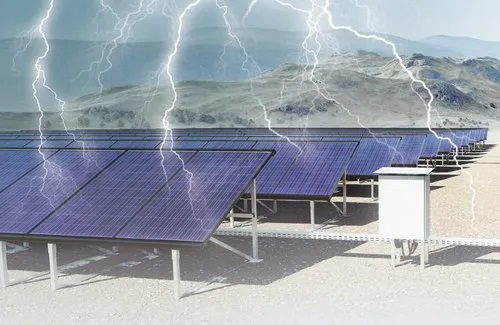Protecting a solar panel photovoltaic (PV) power station against lightning is crucial to prevent damage to the system and ensure the safety of both the installation and nearby structures. Lightning protection measures typically involve a combination of strategies and equipment. Here’s how you can protect a solar panel PV power station against lightning:
- Lightning Rods (Air Terminals):
- Install lightning rods at the highest points of the PV array or support structures. Lightning rods are designed to attract lightning strikes and provide a path for lightning to safely dissipate into the ground. These rods are often grounded with copper or aluminum conductors.
- Grounding System:
- Establish a robust grounding system for the entire PV installation. This includes connecting the lightning rods, solar panels, support structures, and other conductive elements to a common grounding network. Proper grounding helps disperse the electrical energy from a lightning strike into the ground safely.
- Surge Protection Devices (SPDs):
- Install surge protection devices (SPDs) at key points in the PV system, such as where electrical cables enter and exit inverters, combiner boxes, and junction boxes. SPDs divert excess voltage and current from lightning strikes or surges away from sensitive equipment.
- Bonding and Equipotential Grounding:
- Ensure proper bonding between all metallic components in the PV system to create an equipotential grounding plane. This minimizes potential differences during a lightning event, reducing the risk of electrical damage and arcing.
- Lightning Arrestors:
- Use lightning arrestors or surge suppressors on power and communication lines to protect against transient voltage surges caused by lightning strikes. These devices can be installed at the inverter, combiner box, and data communication equipment.
- Proper Cable Management:
- Implement cable management practices to minimize cable exposure and create a clean and organized installation. This reduces the risk of lightning damage to cables and connectors.
- Lightning Risk Assessment:
- Conduct a lightning risk assessment to identify vulnerable areas within the PV power station. This assessment may consider local lightning strike frequency and the site’s geographical location.


